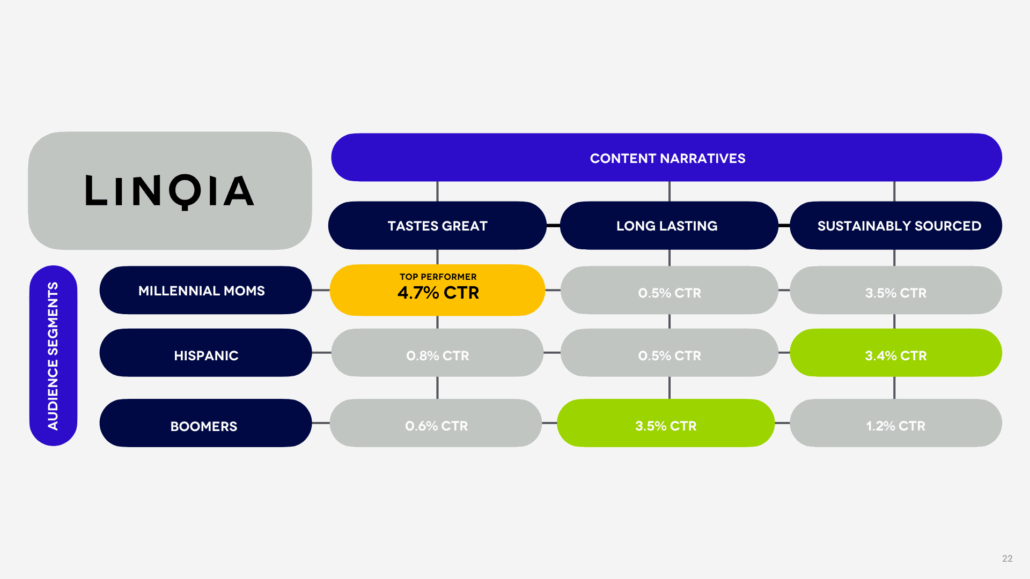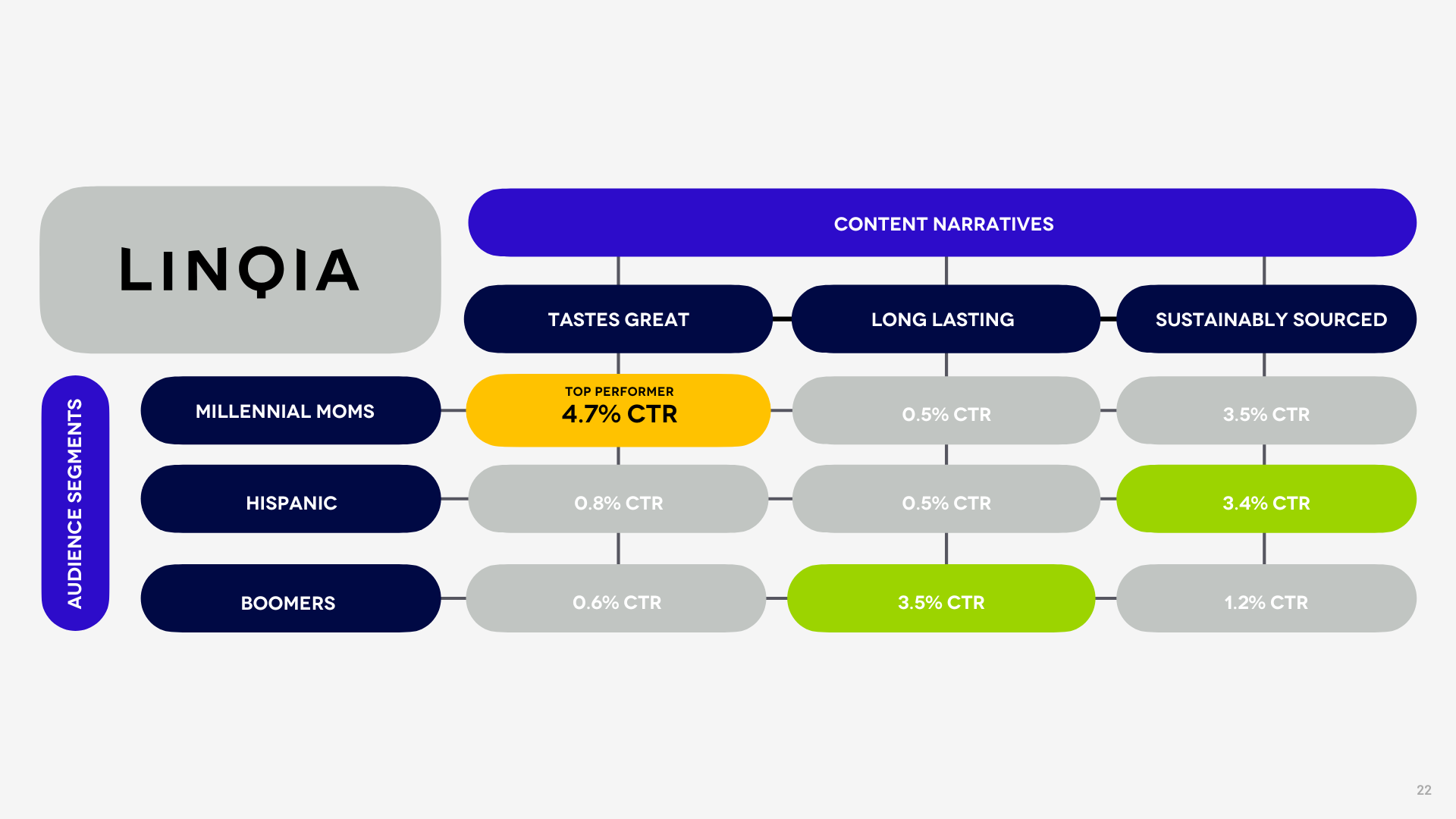Influencer marketing has an interesting benefit that many brands aren’t leveraging: message testing. The volume of content creators are producing allows for a level of testing that was typically reserved for qualitative research and one-way glass interviews.
Enter the process of narrative mapping, which not only helps shape content strategy but also provides highly valuable data on what messages resonate with different audience segments.
Here’s how it works—and how to use it to make smarter decisions across your influencer campaigns.
What Is Narrative Mapping?
Narrative Mapping is a framework for organizing and evaluating your brand’s key messages against your audience segments. It helps marketers identify which messages resonate most with specific groups—using influencer content performance as the signal.
This approach turns content into insight. Rather than guessing what message will work for a given audience, narrative mapping shows you what’s actually performing based on measurable outcomes.
Step 1: Build the Narrative Map
Create a spreadsheet or grid to start your narrative map.
Columns: List all the brand features and benefits you can think of—examples include tastes great, long-lasting, fast acting, environmentally friendly, and so on.
Rows: List your core audience segments. Avoid generic or persona-style names—be specific and straightforward, like Hispanic consumers, Millennial moms, Boomers, etc.
This gives you a clear visual of every potential message + audience combination your brand could address.
Step 2: Evaluate Your Content
Now use the map to answer two key questions:
Do you have content for that message and audience combination?
Look at each cell in the matrix. Do you have influencer content that:
- Speaks to that specific brand benefit?
- Features creators who represent the intended audience segment?
- Delivers the message in a way that feels culturally relevant?
If not, that’s a gap—and an opportunity to create or prioritize content that fills it.
How did that content perform?
Where content does exist, assess performance by segment and message. Use whichever metric matters most to your campaign:
- View-through rate (VTR)
- Click-through rate (CTR)
- Cost per click (CPC)
- Cost per acquisition (CPA)
This step is where narrative mapping becomes truly valuable. It turns creative into a testable hypothesis—and performance into insight.
Why Narrative Mapping Works
Narrative mapping doesn’t require filling every cell of the grid. In fact, the gaps are just as instructive.
They help you:
- Prioritize content development
- Spot underrepresented audiences or overlooked brand benefits
- Align messaging with real audience behavior
- Maximize ROI on creative by focusing on what works
It’s also a helpful tool for cross-functional teams—creative, strategy, and media can all use the same framework to stay aligned.
Final Thoughts
Narrative Mapping brings a strategic layer to influencer marketing. Instead of simply producing more content, it helps brands produce the right content—matched to the right message, for the right audience.
When done well, it transforms influencer campaigns from storytelling vehicles into scalable message testing engines.
If you’re already running influencer programs, you likely have the data you need. Narrative Mapping is how you put it to work.
Want more updates? Subscribe to our newsletter at www.linqia.com/subscribe to never miss what’s new in influencer marketing and social media.




